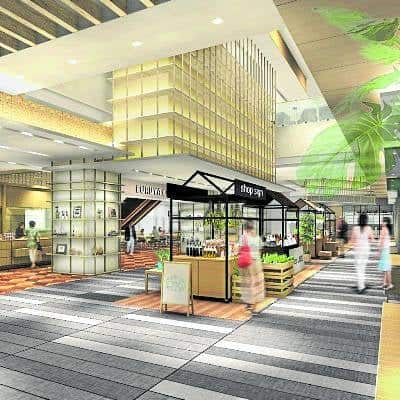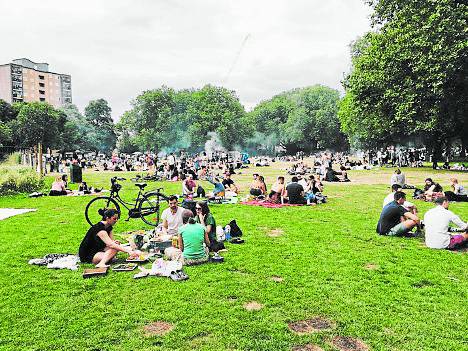
The shopping center business was among those severely affected by the COVID-19 pandemic. The lockdowns dealt a devastating second blow to bricks-and-mortar retailing, which was already besieged by the rise of e-commerce.
While online distribution channels such as Amazon and customer-to-customer platforms such as eBay have been eroding the market share of traditional retailers in western countries for years, Asian malls were generally viewed as more resilient.
Months before the pandemic, large malls were still being opened, built or planned in the country. However, there was no escaping the scourge of COVID-19 when it hit, affecting big and small retailers without impunity and forcing many store closures locally.
Online channels
The impact prompted the acceleration of digital transformation with many retailers creating new online channels.
Many shop owners responded to the economic pressures of the pandemic by giving up their expensive leases and focusing instead on their online strategy, integrating stores with online platforms, and adopting innovative approaches of online shopping. Retail start-ups adopted online merchandising from the get-go, bypassing the physical store entirely.
Interestingly, despite the lockdowns, demand for food and beverage surged during the pandemic along with purchases for household items. These point to a shift in consumer behavior and do not necessarily signal the death of shopping per se. People will continue to consume goods and services no matter what. It is the physical form of shopping that is changing.
The mall industry continues to be on survival mode given restrictions on in-store capacity, increased fixed costs, supply chain challenges and general uneasiness of the public in enclosed settings.
The forecasted recovery by experts, however, will likely be contingent on mass vaccination and the lifting of restrictions. One thing is evident however: the forces currently upending retail are not the result of cyclical downturns we’ve seen in the past. The mall as we know it is forever changed and there is no old normal to go back to.

Omnichannel strategy
Despite the pandemic, many businesses in Southeast Asia are investing in their physical presence by creating new models for offline shopping or adopting a hybrid of physical and digital store strategies.
The omnichannel strategy implies that proximity and service delivery count more than physical store size. Retailers now should be able to fulfill orders faster and more reliably. Smaller retail formats that are more geographically dispersed will be better positioned to reach consumers.
Physical differentiation
In an era when almost anything can be bought online, physical differentiation becomes more important.
Mallgoers don’t just go to shopping centers to purchase goods. They are there to consume space and their currency is time. The better the quality of the space offered, the more customers will be attracted to it and the more time they will spend there.
While shopping malls have been derided as an architectural typology—large boxes that create road congestion, glorify materialism and destroy local businesses—these have become popular in the Philippines because of the deficiency in our cities. They have come to represent an image of how we want our cities to be.

The physical form of the contemporary shopping mall has strayed so far from the original intent of its pioneer architect, Victor Gruen, who envisioned the enclosed mall as a place for pedestrians, filled with vibrancy and landscape and public art, inspired by the shopping streets of Vienna where he grew up.
Lamenting how shopping malls have become car-centric, he once said, “Suburban business real estate has often been evaluated on the basis of passing automobile traffic. This evaluation overlooks the fact that automobiles do not buy merchandise.”
Potential anchors for retail
One thing, however, remains fundamental: a shopping center relies on foot traffic. Its economic viability is tied to the daily pedestrian count it attracts. As such, malls have expanded their offerings to include entertainment, amusement, sports, theme parks and convention halls.
But with the pandemic, we have also seen the value people now place on the outdoors and on more practical forms of mobility: parks, transit, outdoor markets, al fresco dining, pedestrianized streets and local environments. All these can be resilient anchors for retail, generating the necessary footfalls, not just to boost consumption, but more meaningfully, to enhance the vibrancy of our settings and communities.
Cities are transforming and so should our shopping centers. Perhaps out of the chaos of the pandemic, we would emerge with the wisdom to finally pursue the essential and meaningful in our built environment—that elusive goal of place.
If you like this article, share it on social media by clicking any of the icons below.
Or in case you haven’t subscribed yet to our newsletter, please click SUBSCRIBE so you won’t miss the daily real estate news updates delivered right to your Inbox.
The article was originally published in Inquirer and written by Ar. Joel Luna.







More Stories
Weekend wanderer: This walk in Manila is a trip to art and to our past
Enjoy no-frills camping in the great outdoors in Tanay
Landco Pacific raises the bar for premium resort and leisure living